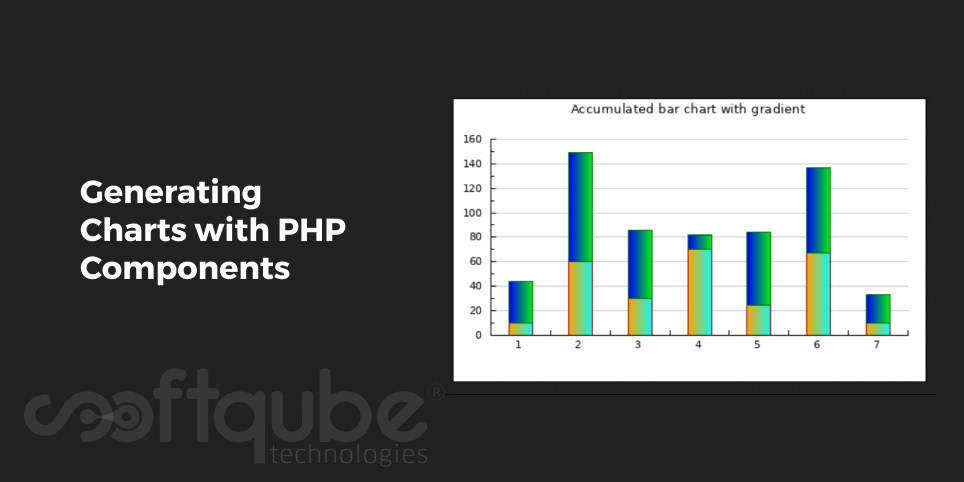Generating Charts with PHP Components
June 30, 2015

Well, we daily come across heaps of data but we often love to deal with systematized data rather than the raw ones and here we can see visualization comes into picture. Data visualization has seen good growth during recent years.
Most of the data if represented via charts becomes easy to understand and this is one of the reasons representing the data via charts and diagrams is very prevalent and so various libraries are developed to make the task of data visualization very easier.
However, before actually dealing with the libraries; it’s necessary to understand the types of charting components which are of two types: Server side and client side. Both of them have their own benefits and drawbacks and which one is the best entirely depends on your objective as well as the resources that you have.
Here, in this blog post; we have included client side charts but before that let’s understand slightly the difference between Server Side & Client Side Chart Creation.
Difference between server side and Client Side chart development:
If you wish to generate image charts then server side components will serve the purpose. These utilize algorithms and then transform the data into chart images. Image based charts consume more of the bandwidth and in case there are large images then these may take time to get downloaded which sometimes can annoy users.
To overcome the limitations of Server side components, one can make use of client side components. One of the best examples is using Javascript based client side components. Data will be taken by the browsers from the server and then the charts will be sent locally.
On the other hand, client side components also offer wide scope of customization. These are interactive, allow animations and can easily get mixed with your application design. Few type of charting libraries like as FusionCharts offer wrappers that help you to write only PHP code.
With PHP Wrappers, one can generate the required Javascript as well as HTML code as a string on the server. These strings can then be used to create charts.
4 Ways to Generate Charts:

- Google Charts: These are based on client side servers and provide various options to create entire charts using PHP only. One can make use of server side code such as PHP to fetch the data.
These are available for free and there are innumerable examples available on the internet making it easy for the PHP developers to create the charts. An important thing that must be borne in mind while using Google charts is that one cannot use Google’s JS files on your server.
- Fusion Charts: Apart from Google, there’s also another option to generate charts with PHP. It is known as Fusion charts which is also based on client side components. These mainly focus on jQuery Charts.
It has a good collection of 99+ interactive charts and 965 maps available in its PHP wrapper. These are easily customizable and offer good support.
But, it’s a paid option. Even though the wrapper is free, one needs to have the license to use the library for commercial purposes. Yes, you can ofcourse try them using its free trial.
- pChart: If you are not satisfied with Fusion or Google Charts then don’t worry Pchart might be an option for you. This is basically server side process and it’s one of the very few basic PHP charting libraries.
Here, the main benefit is that you can easily have cross browser as well as multiple device compatibility as it generates images for you. Yet, it lacks the creativity and interaction that client side charts offer.
- Develop charts using ChartLogix PHP Graphs: This is not an option that has free trial. However, one can use its design feature to be familiar with code and design. It saves you a lot of time.
Wind Up
Hope these charts will help developers to make PHP development easy and quick. We constantly keep on updating our blogs for various PHP tips for developers which can make their task easier.
Further, we also offer advice to business people as to which PHP platform will be best for them. If you wish to know more about our PHP projects and how we conduct them then do get in touch with Softqube Technologies, PHP Web Development Company India.
Share on







